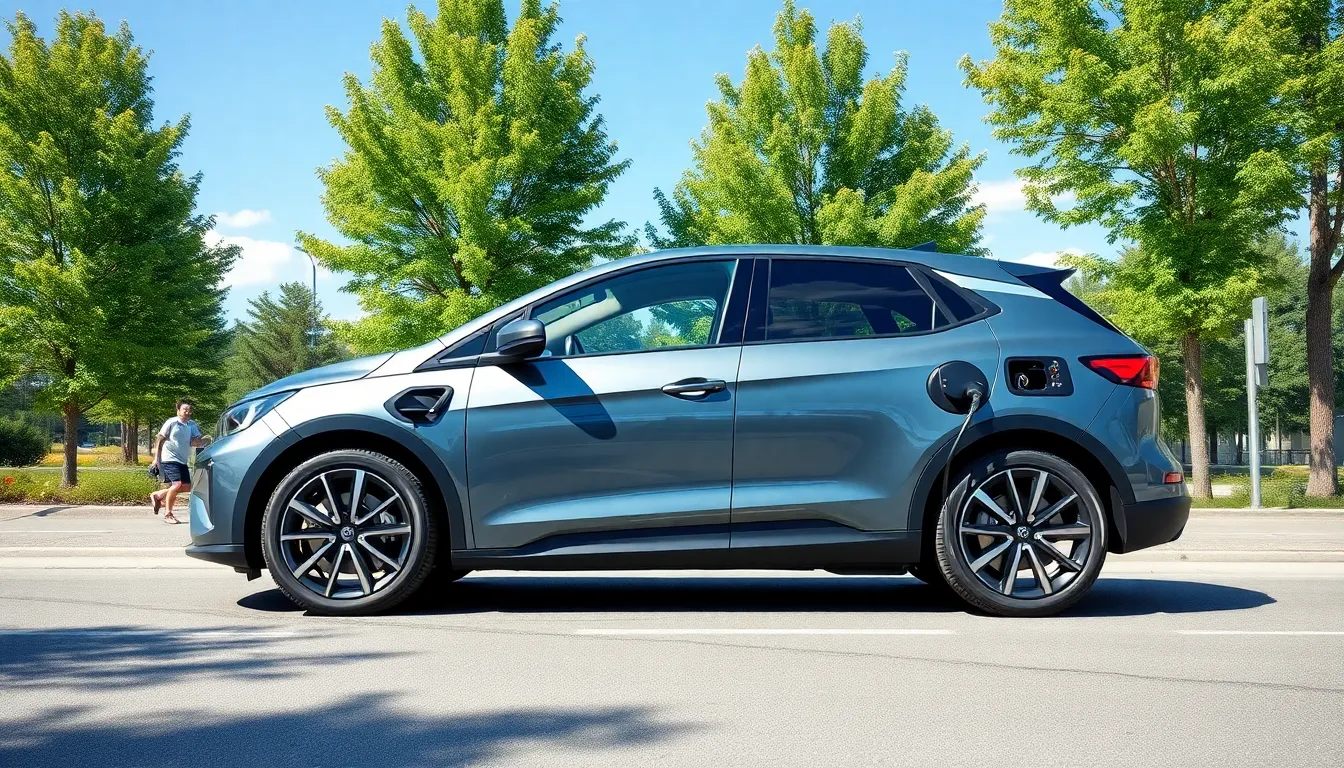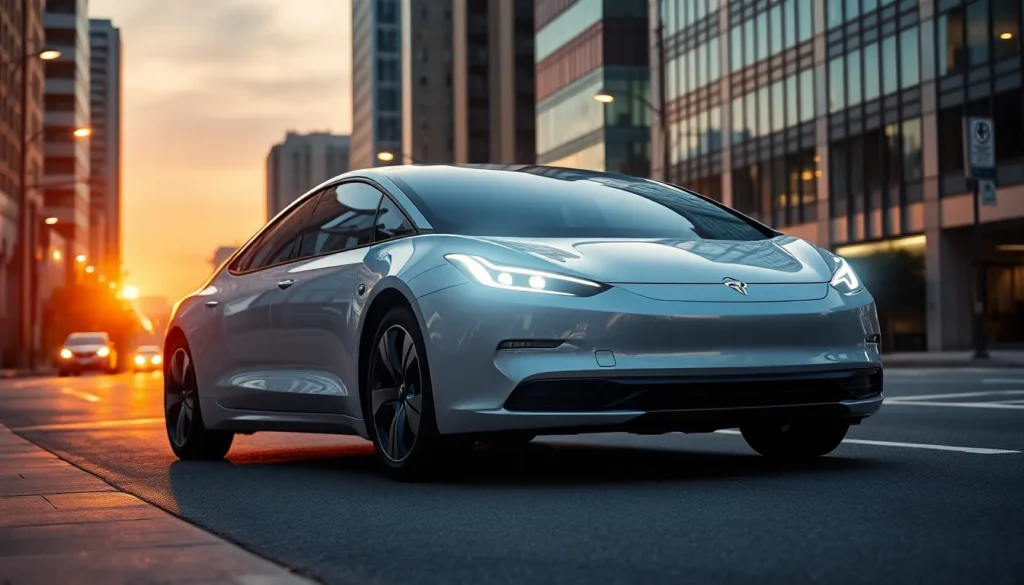Electric vehicles have taken the world by storm, promising a cleaner and quieter ride. But amidst the buzz, a burning question lingers: do these high-tech wonders even have transmissions? While traditional cars rely on complex gear systems to shift through speeds, electric vehicles are rewriting the rules of the road.
Picture this: you hop into your electric car, and instead of wrestling with a clunky gear stick, you simply press the pedal and zoom off. It sounds like magic, right? Well, it’s all thanks to electric motors that deliver instant torque without the need for a multi-speed transmission. So buckle up as we dive into the fascinating world of electric vehicle mechanics and uncover whether those gears are truly a thing of the past or just taking a backseat in this electrifying journey.
Table of Contents
ToggleUnderstanding Transmissions in Vehicles
Transmissions play a crucial role in conventional vehicles, functioning as a system that adjusts the engine’s power to the wheels. Electric vehicles, however, operate differently due to their unique mechanics and power sources.
What Is a Transmission?
A transmission serves as an intermediary between the engine and drive wheels. It alters the vehicle’s gear ratios, enabling smooth acceleration and deceleration. Various types exist, including automatic, manual, and continuously variable transmissions (CVTs). Each type adjusts how power gets delivered to the wheels, affecting speed and fuel efficiency. Essentially, a transmission translates rotational power from the engine into usable energy for movement.
How Traditional Vehicles Use Transmissions
Traditional vehicles rely heavily on complex transmissions for performance. These systems engage multiple gears to manage different speed ranges and power outputs. During acceleration, a driver typically shifts gears to maintain the engine’s optimal efficiency. For example, lower gears provide increased torque at lower speeds, while higher gears allow for smoother cruising at highway speeds. The interplay between gear selection and engine output enhances control and responsiveness, ensuring a balanced driving experience.
Electric Vehicles Overview

Electric vehicles (EVs) represent a revolutionary shift in the automotive industry. They rely on electric motors instead of conventional engines, changing how drivers experience acceleration and efficiency.
Definition and Types of Electric Vehicles
EVs are defined as vehicles powered entirely or partly by electricity. Battery electric vehicles (BEVs) run solely on electric power, while plug-in hybrid electric vehicles (PHEVs) combine electric and gasoline engines. Extended-range electric vehicles (EREVs) utilize electric motors with an onboard gasoline generator to increase driving range. Each type serves distinct purposes, catering to various consumer needs and environmental considerations.
Key Components of Electric Vehicles
Several key components make up electric vehicles. The battery acts as the primary energy source, determining range and performance. Electric motors convert electrical energy into mechanical power, giving immediate torque for quick acceleration. Conversely, regenerative braking systems recapture energy during braking, enhancing efficiency by recharging the battery. Additional components include power electronics that manage power flow, charging systems for connecting to electrical sources, and thermal management systems that regulate temperature, ensuring optimal performance.
Do Electric Vehicles Have Transmissions?
Electric vehicles do not use traditional transmissions, which sets them apart from conventional vehicles. Instead of complex gear systems, EVs feature direct drive systems that deliver power directly from the electric motor to the wheels.
Differences Between Electric and Traditional Transmissions
Differences between electric and traditional transmissions primarily lie in their complexity and functionality. Traditional vehicles use multiple gears to adjust power and speed, which involves shifting for acceleration. In contrast, electric vehicles provide seamless acceleration since electric motors deliver torque instantly. Efficiency also varies; electric drive offers greater energy efficiency by eliminating the energy losses associated with shifting gears. Drivers often experience simplified driving with EVs, where acceleration feels more responsive and linear compared to gas-powered vehicles.
Types of Transmissions in Electric Vehicles
Types of transmissions in electric vehicles are notably simpler than those in gasoline cars. Most electric vehicles utilize a single-speed transmission, which allows constant power delivery without the need for gear changes. Some high-performance electric models might incorporate multi-speed transmissions to optimize performance at different speeds, but these remain rare. Additionally, innovations in transmission technology continue to emerge, targeting improved efficiency and performance in EVs. Examples include integrated transmission systems within electric motors, further minimizing complexity while enhancing vehicle operation.
Benefits of Electric Vehicle Transmission Systems
Electric vehicle transmission systems offer distinct advantages that enhance overall performance and efficiency. Their design marks a significant shift from traditional engineering.
Improved Efficiency
Electric vehicles utilize direct drive systems that connect electric motors directly to the wheels. This configuration allows for optimal power delivery without the energy losses commonly seen in complex multi-gear systems. Consequently, minimal mechanical friction occurs, enhancing the overall efficiency of an electric vehicle. EVs often achieve energy conversion rates exceeding 90%, compared to conventional vehicles that typically fall under 20%. The continuous power availability translates into unmatched acceleration, granting drivers immediate responsiveness. Electric vehicles can also regenerate energy through regenerative braking systems, recovering energy during deceleration and further improving efficiency.
Simplified Design
Simplicity defines electric vehicle architectures, particularly regarding transmission systems. The absence of multiple gears leads to a reduction in moving parts, resulting in fewer potential failure points. This streamlined approach minimizes maintenance requirements, providing a convenient ownership experience. Engineers design electric vehicle transmissions primarily to handle a single speed, which simplifies the complexity found in traditional systems. Many electric vehicle models implement robust yet lightweight components, enhancing durability while lowering overall weight. With less complexity, manufacturers can achieve faster production times and reduced costs, appealing to both producers and consumers.
Electric vehicles are redefining the landscape of automotive technology by eliminating traditional transmissions. With their direct drive systems and instant torque, EVs offer a driving experience that’s both seamless and efficient. The simplicity of their design not only enhances performance but also reduces maintenance needs, making them an attractive option for consumers.
As the automotive industry continues to evolve, the shift towards electric vehicles signals a move away from complex gear systems. This transformation highlights the potential for innovation in vehicle design and performance. With ongoing advancements in electric vehicle technology, the future looks promising for both manufacturers and drivers alike.




